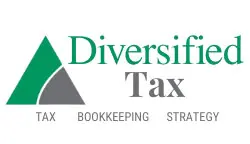6 End Of Year Tax Tips
6 End Of Year Tax Tips
As we approach the end of the year, there are several things to consider to put yourself in a good position for your taxes next year.
Late-Year Tax Deductions
The end of the year is the perfect time to lower your tax bill by maximizing your deductions. Any charitable contributions that you make at the end of the year will count toward lowering your tax bill if you itemize your taxes. This works if you charge it on your credit card for this year and pay it off next year, or write a check for the charity as long as it is dated by the last day of the calendar year. Something else to keep in mind is donating your stock to charity, as you’re not only making a charitable contribution but also avoiding any capital gains on that stock in the meantime.
Chances are if you’re itemizing your taxes, you’ll also want to pay attention to your other deductible expenses, so the end of the year is the time to gather those receipts for the following items:
- Medical expenses
- Dental expenses
- Charity contributions
- Mortgage interest
- Investment interest
- Casualty, disaster and theft losses, if applicable
Medical bills must exceed 7.5% of your adjusted gross income in order for you to be able to deduct them – and in general, you’d have to have qualifying expenses over $25,900 if you’re married filing jointly in order to itemize your taxes and claim deductions like the ones listed above. The standard deduction amount for single taxpayers is $12,950.
Check Your Withholdings
Your taxes are based on your W-4 if an employer employs you, and if there is incorrect information or you’re not withholding the correct amount, it can cause an incorrect amount on your taxes – resulting in owing more money than you should (or a larger refund). You can check to see if you’re withholding the recommended amount by using the estimator provided by the IRS, and if you find that you need to make an adjustment you can do so with your employer.
Spend FSA Money
Your flexible spending account (FSA) is a use-it-or-lose-it account at the end of the year, so now is the time to ensure that you’ve used up any of the money set aside in that account for qualifying health expenses.
Tax Loss Harvesting
This year-end tax strategy involves selling off investments at a loss in order to offset any capital gains that you made during the year, as the losses from your sale offset gains dollar by dollar. If you sell so much that your losses exceed your capital gains, you can use up to $3,000 of the excess loss to override other income or carry it into the next year to offset gains.
Plan for Your Retirement Accounts
The end of the year is the time to plan ahead for your retirement accounts – are you contributing as much as you can for next year? Your 401(k) or traditional IRA are tax-advantaged, so they make great investment vehicles. Remember that if you’re over 50, you can make additional catch-up contributions to your 401(k). If you have an HSA, this is another investment account that you can contribute to and use over time.
Talk to a tax professional and your financial advisor to find out if this year would be a good time to do a Roth IRA conversion – converting a 401(k) or traditional IRA to a Roth may have some financial and tax advantages depending on your financial situation.
Document Gathering & Tax Prep
During the end of the year, you’ll likely be receiving year-end statements for various accounts – now is the time to gather them together and hold on to them, because you’ll make tax time much easier in a few weeks.
It’s also an excellent time to plan for when you’ll do your tax prep, and if you are using a company to prepare your taxes, many book up quickly, so start contacting accountants now for the next tax season. Diversified Tax is always here to help you with your tax needs.
Don’t miss tax tips delivered to your inbox:




